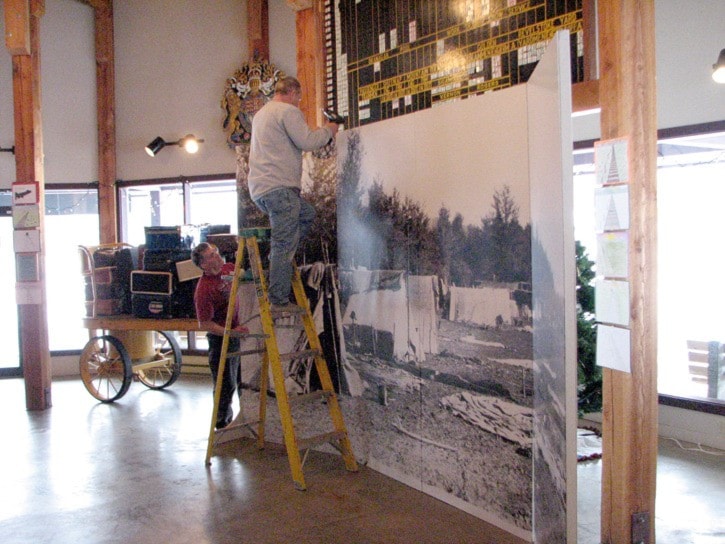The Revelstoke Railway Museum today announced the first showing of the travelling exhibit of Chinese Legacies: Building the Canadian Pacific Railway, which will be featured at Exporail, in Saint Constant, Quebec, from Jan. 15 to May 29, 2011.
The Revelstoke Railway Museum announced the show in a Jan. 13 media release:
Chinese Legacies began as a collaborative exhibit project between the Revelstoke Railway Museum and the Revelstoke Museum & Archives. These two institutions teamed up to create exhibits on a significant yet previously unexplored facet of the railway and community history of this region.
The exhibit, Chinese Legacies: Building the Canadian Pacific Railway, featured at the Revelstoke Railway Museum since 2008, explores the fascinating story of the Chinese labourers who contributed to the construction of the Canadian Pacific Railway between Port Moody and Craigellachie. This presentation of their travel to British Columbia, their living and working conditions and the contribution they made to the construction of the railway has been visited by thousands over the past two and a half years and is now set to travel to other museum venues, beginning in 2011. Revelstoke Museum and Archives continues to host their exhibit Chinese Legacies: Revelstoke’s Chinese Community at its museum location in downtown Revelstoke. This companion to the Railway Museum exhibit explores the large Chinese community that prospered for many years in Revelstoke and features the Kwong family who played a prominent role in the early history of Revelstoke.
Several thousand Chinese men worked on the CPR mainline from Port Moody to Craigellachie, and it is estimated that between 600 and 2,220 of these workers died as a result of accidents, disease, and starvation. The Inland Sentinel newspaper, originally published at Yale, has many articles about the Chinese labourers, and while many people believed that their presence was necessary to construct the railway, they were greatly resented by the white population, and suffered a great deal of discrimination. Their wages were half those of white men doing the same jobs, and they were often exploited by their crew bosses.
Once the CPR was completed in 1885, many of the Chinese labourers were left destitute. Quite a few of them settled in Revelstoke, where they worked mainly as cooks, servants, laundrymen, and labourers. In 1901, there were 113 Chinese people living in Revelstoke, close to one-tenth of the population. It is interesting to note that of those 113 people; only one was a woman, although half of the men were married. This was a result of the head tax imposed on Chinese immigrants, making it very costly for men to bring their wives to Canada. The community was a vibrant one, however, and continued to thrive for many years.
Exporail, the Canadian Railway Museum, has become the largest railway museum in Canada and one of the most significant ones in the world. The story of the Chinese railway workers speaks to our national story and is suitable for a wide-ranging audience in communities all across the country. Features of the exhibit include a railway workers’ campsite diorama, a slide presentation of historical photographs, original artifacts, some on loan from the Port Moody Station Museum, and text available in English, French, and Mandarin.
Expressions of interest from potential host venues include the Prince George Railway & Forestry Museum, Prince George, B.C., the Port Moody Station Museum, and the Copperbelt Mining & Railway Museum, in the Yukon. Additional resources and visual displays accompany the exhibit that will be available for travel until December 2014.
Recognition of the Chinese workers’ contribution to the railway’s construction has recently been a subject of discussion in the media following the Last Spike’s 125th Anniversary celebrations in 2010 and this exhibit joins other individuals and organizations in their efforts to educate Canadians on this significant aspect of our nation’s past. It is also hoped that this exhibit will encourage various communities to recognize the inheritance of nation-building evident in many cultures across the country.
The joint project that became the Chinese Legacies exhibit, was made possible thanks to generous grants from BC Hydro, the Vancouver Foundation, the Columbia Basin Trust, and the BC Museums Association. Generous financial support was also given by the Province of British Columbia through BC150 Years, a Ministry of Tourism, Sports, and the Arts initiative.
